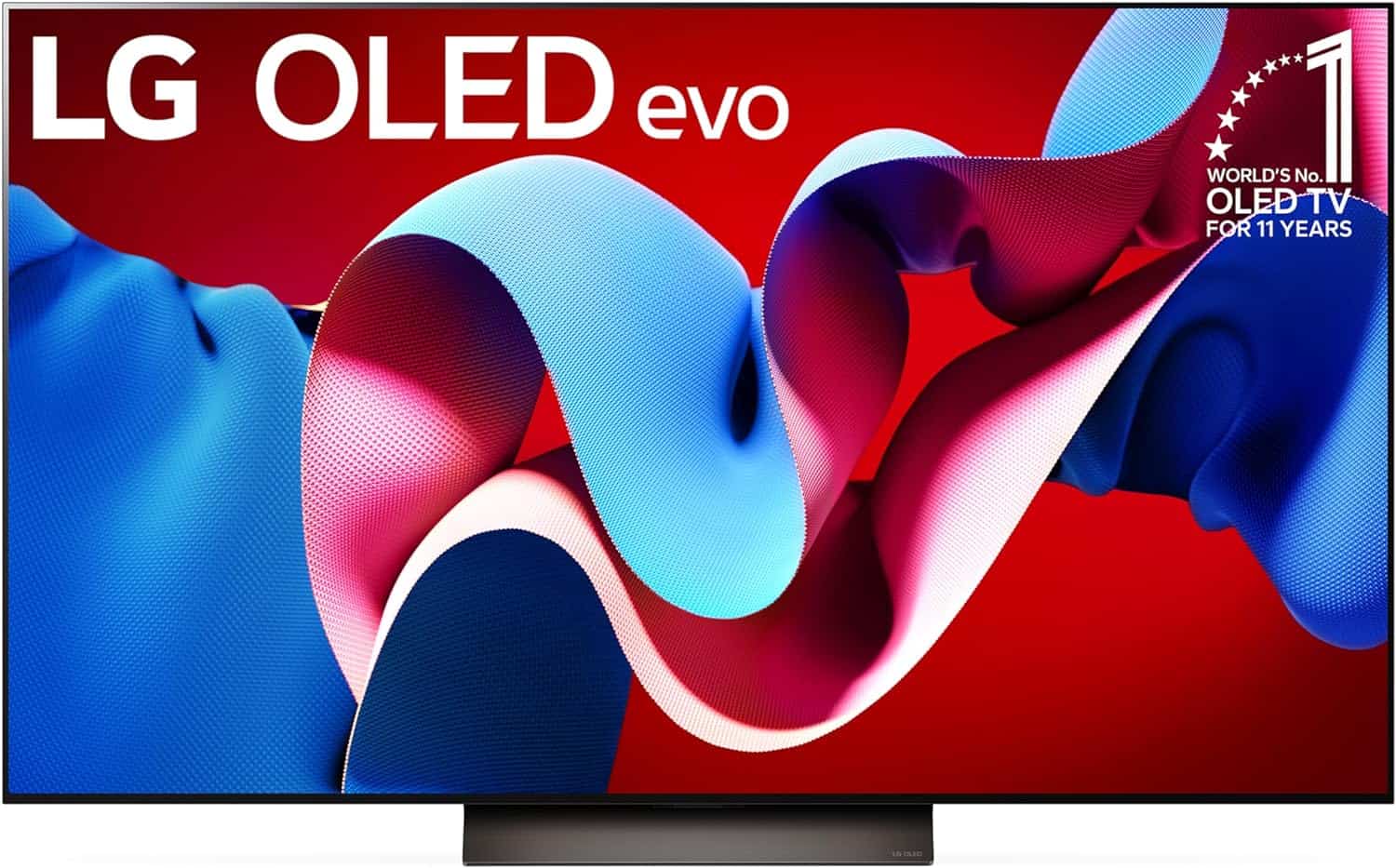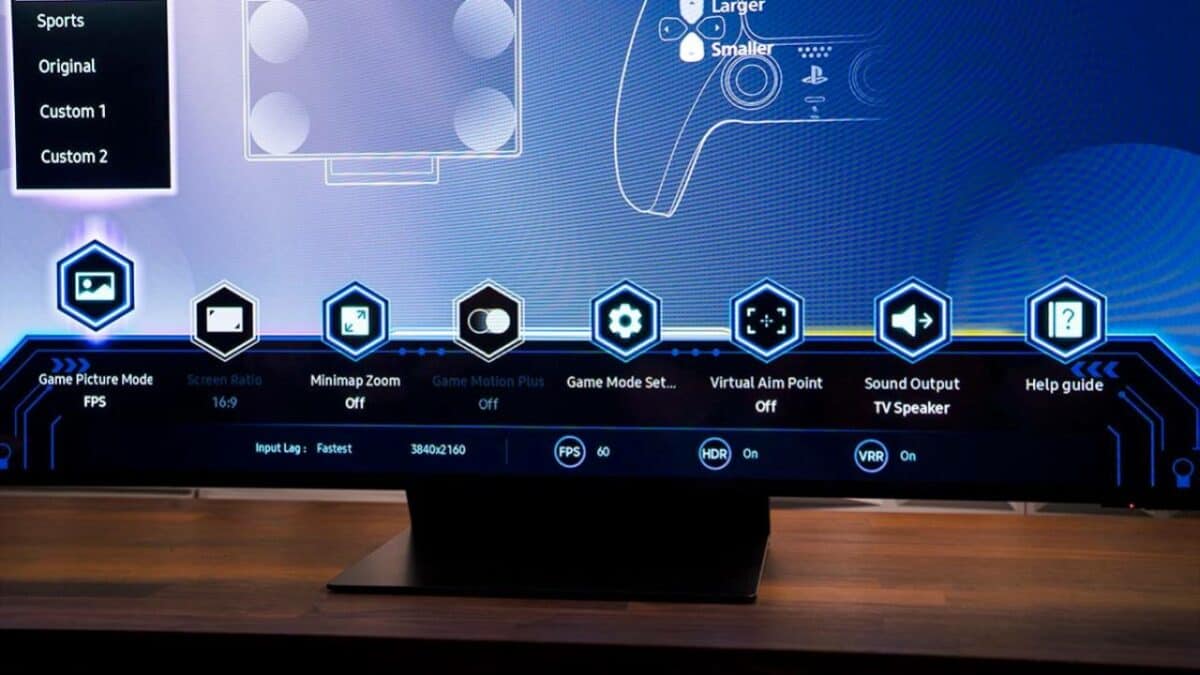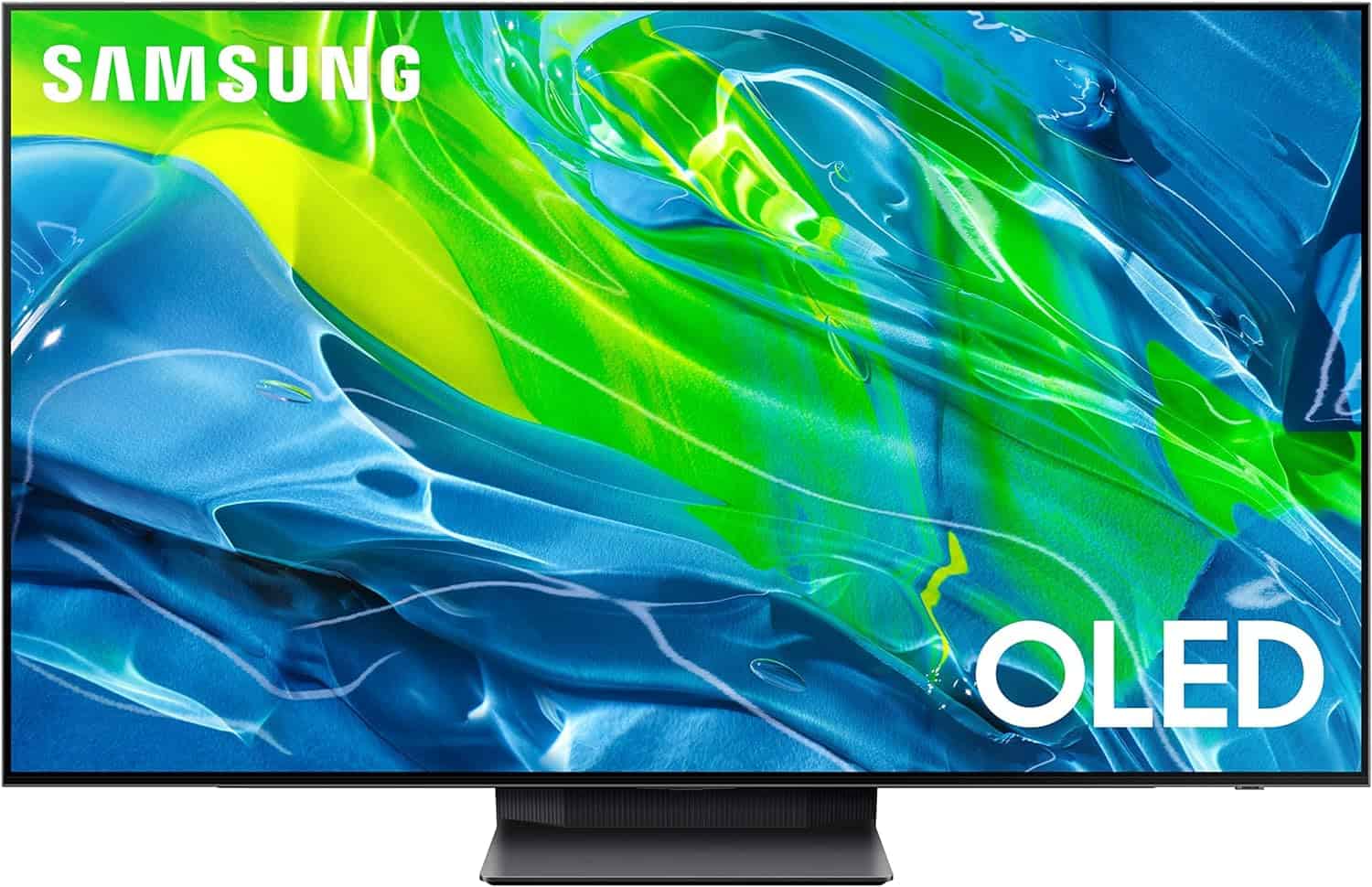
LG C4 OLED Series

Now up to 144Hz refresh rate at 4K
Highly responsive
Improved Alpha 9 AI chip
Native Chromecast support
Wide range of sizes
Still no MLA like the G-series
Not a massive upgrade over the LG C3
Digging into the specs, price, and more to compare LG C4 vs Samsung S95B

WePC is reader-supported. When you buy through links on our site, we may earn an affiliate commission. Prices subject to change. Learn more
The LG C4 is one of the best mid-range TVs of 2024. But if we were to compare the LG C4 vs Samsung S95B, which TV would come out on top? These are a couple of the best OLED TVs on the market and it looks to be a close call.
The LG C4 boasts a brand-new Alpha 9 AI chip, an important change that helps boost the peak brightness of its OLED evo panel. On the other hand, the Samsung S95B, being a high-end TV from 2022, relied on QD-OLED panel technology to deliver some of the most vibrant and beautiful colors we have ever seen.
Since the S95B was released in 2022, its gaming features may feel a bit outdated, but it is still one of the best gaming TVs of all time. Nevertheless, to see which one of these two TVs is actually better, we will compare them against each other based on display, sound, price, and gaming performance.


Now up to 144Hz refresh rate at 4K
Highly responsive
Improved Alpha 9 AI chip
Native Chromecast support
Wide range of sizes
Still no MLA like the G-series
Not a massive upgrade over the LG C3


QD-OLED technology
Perfect blacks
Excellent value for money
Neural Quantum Processor 4K
VRR support
Game menu
Lacks some premium image processing and game-tailored features
| Specification | LG C4 | Samsung S95B |
|---|---|---|
| Panel type | OLED evo | QD-OLED |
| Size range | 42″, 48″, 55″, 65″, 77″, 83″ | 55”, 65” |
| Resolution | 3840 x 2160 (4K) | 3840 x 2160 (4K) |
| Refresh rate | 144Hz | 120Hz |
| Processor | Alpha 9 AI | Neural Quantum Processor 4K |
| HDMI standard | 4x HDMI 2.1 | 4x HDMI 2.1 |
| VRR | HDMI VRR, AMD FreeSync, NVIDIA G-Sync | HDMI VRR, AMD FreeSync, NVIDIA G-Sync |
| HDR | Dolby Vision / HDR10 / HLG | HDR, HDR10+, HLG |
With two years in between, there are plenty of differences between the LG C4 and the Samsung S95B. First up, by using the OLED evo panel, backed by the Alpha 9 AI chip, the LG C4’s peak brightness should close in on that of the S95B, as last-gen’s C3 came pretty close. So, whether you’re watching SDR content, HDR, or even playing games in the Game Mode, both models are more than bright enough.
Furthermore, the S95B is known to have raised blacks in well-lit rooms, so we already recommend it to those who prefer to watch their shows or movies in dark environments. In addition, thanks to its improved brightness, the LG C4 will be ideal for most lighting conditions.
While brightness is an important measure of a TV’s display quality, it is not the only factor to consider. The color gamut coverage and overall accuracy also matter a lot, and this is where the Samsung S95B shines. Since it is a high-end, premium TV, its color coverage is exceptional. Everything looks far more vibrant and brilliant.
Both TVs have pretty similar sound quality. The S95B supports Dolby Atmos and Object Tracking Sound, while the LG C4 supports Dolby Atmos and AI Sound Pro. One good thing about the LG C4 is that it can support wireless and lossless Dolby Atmos, so you can connect it to a soundbar and enjoy immersive audio, so we recommend picking up the best soundbar for TV to pair with it. LG’s range also gets DTS support, something the S95B lacks.
As far as HDR support goes, the S95B’s lack of Dolby Vision may be a dealbreaker for some people, as it instead opts for HDR10+ support, while the LG C4 has Dolby Vision. While the difference between the two may be slightly different, the C4’s HDR performance definitely takes the lead.
| Size | LG C4 | Samsung S95B (March 2024) |
|---|---|---|
| 83” | $5,399.99 | N/A |
| 77” | $3,699.99 | N/A |
| 65” | $2,699.99 | $1,884.95 |
| 55” | $1,999.99 | $1,497.99 |
| 48” | $1,599.99 | N/A |
| 42” | $1,499.99 | N/A |
Focusing on the pricing, the S95B has seen huge price drops over the years, and right now, its 65” model costs ~$800 less and the 55” model costs $500 less than their LG C4 equivalents.
This gives the S95B a big advantage over the C4 in terms of value for money. That’s because, while 2 years old, this TV is still a great choice for everyday use, and you’re getting them for quite the bargain price.
In addition to that, with the S95D also releasing in 2024, we expect the S95B to drop further down in pricing or even go on clearance at some retailers. So, if you can wait, we recommend holding off your S95B purchase till a deals season or a clearance sale takes off.
When it comes to gaming, the Samsung S95B had some of the best performance of its time. It rocked a solid 120Hz display and an instantaneous response time paired with low input lag.
However, when compared with the LG C4, the S95B falls short in performance. The C4 boasts a maximum refresh rate of 144Hz, along with a quicker response time and lower input lag. This makes it a better choice for action-packed FPS gaming, where smooth and responsive display is a priority.
For variable refresh rate support, both TVs feature AMD FreeSync, HDMI VRR, and G-Sync compatibility, so you don’t have to worry about any screen tears or stutters regardless of your platform.
It is also good to see full HDMI 2.1 bandwidth across all fours in both TVs, meaning you don’t have to compromise performance if you have multiple consoles or a multi-platform gaming setup. However, the C4 will be better for PC gaming thanks to the smaller 42″ or 48″ sizes which can work well for a desktop setting – plus you’ll unlock that extra 24Hz.
Lastly, HDR gaming will look brighter in the LG C4 thanks to its overall enhanced brightness compared to last gen. Dolby Vision also plays a role in giving the C4 an edge in HDR gaming, but the S95B is not all bad, especially considering its color vibrancy.


Sizes
42″, 48″, 55″, 65″, 77″, 83″
Screen technology
OLED
Resolution
3840 x 2160 (4K)
Refresh rate
144Hz
Panel type
WOLED
HDMI standard
HDMI 2.1


Sizes
55″, 65″
Screen Technology
QD-OLED
Resolution
4K Ultra HD 3840 x 2160p
Refresh rate
120Hz
Panel type
QD-OLED
HDMI standard
HDMI 2.1
Both of these TVs are solid options. The S95B is a couple of years older than the C4, but it still holds up to this day. It is the less versatile option though as the first-gen QD-OLED panel was only available in 55-inch and 65-inch screen sizes. The C4 has you covered from 42″ all the way up to 83″ to hit a wide range of consumers.
The S95B definitely offers the better value for money at the moment, and it’s a perfect choice for watching your favorite TV shows and movies, as well as console gaming. If you want a display for your PC, then the C4 is the better choice thanks to its improved gaming specs.
We don’t expect the C4 to be quite as bright as the S95B in every scenario, but it should come pretty close. Even though this Samsung model features an older first-gen QD-OLED panel, the C4 still doesn’t get the same MLA tech as the premium G4 to really push the peak brightness.
Tests for the C3 show that it fell just short of the S95B, but the C4 should come pretty close. One area where LG’s displays usually falter in brightness is while in game mode, and we expect a similar story for the C4.
All things considered, it wouldn’t be fair to call either of the two TVs a clear winner over the other. Yet, for the majority of users, we lean towards recommending the LG C4. It’s a newer model that delivers a brighter display over last gen, better gaming performance, and serves well as an all-purpose TV for everyday use – it’s also better for upscaling content. If you’re interested, we’ve already put together a guide on where to buy LG C4 OLED TV right now.
Conversely, the Samsung S95B might be the better choice for those looking to save a significant amount on their next TV purchase, prioritizing a top-notch display with superior color performance. The brightness levels don’t disappoint and the colors really pop.